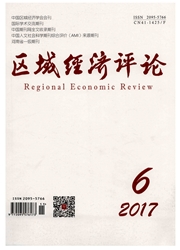

 中文摘要:
中文摘要:
近年来,东北老工业基地再次遇到前所未有的挑战。2011—2014年期间,东北地区经济增速呈现"高开、低走"的特点,工业经济从稳增长向保增长转变,传统优势产业衰退和新增长点尚未成规模是导致经济增速断崖式下滑的直接因素。归结而言,体制改革受阻和结构调整转换困难是"新东北现象"的症结所在。为了更好地促进东北老工业基地新一轮振兴,东北老工业基地新一轮振兴战略应与"一带一路"战略、创新驱动战略、军民融合战略等国家重大发展战略相互衔接,形成合力,共同解决东北地区发展动力不足问题。
 英文摘要:
英文摘要:
Recently, Chinese economy faced unprecedented challenges in fully revitalizing old industrial bases in thenortheast and other parts of the country. During the year 2011 to 2014, the economic growth came off early highs and thegoal of steady growth of industrial economy turned to ensuring growth. The traditional industry recession and the newgrowth point never achieving economies of scale is the direct factor of economy downturn. To sum up, it is the blockedsystem reform and structure transformation difficulties which caused the new phenomenon of northeast area. In order topreferably revitalizing old industrial bases in the northeast, we need to integrate the new revitalize strategy with"One beltone road", innovation-driven strategy, civil-military integration and other major development strategies, to solve the problemof insufficient development power in northeast of China.
 同期刊论文项目
同期刊论文项目
 同项目期刊论文
同项目期刊论文
 期刊信息
期刊信息
